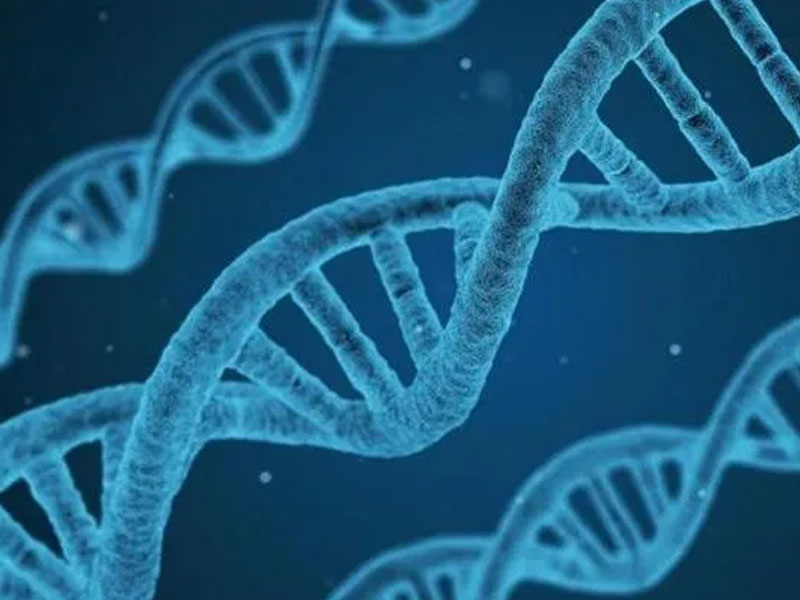UK becomes first to approve Casgevy genetic therapy for blood disorders
SOURCE: HTTPS://INTERESTINGENGINEERING.COM/
NOV 17, 2023
Researchers At Stanford Develop Engineered 'mini' CRISPR Genome Editing System
SOURCE: REPUBLICWORLD.COM
SEP 08, 2021

Picture Credit: Unsplash/RepresentativeImage
CRISPR gene editing is often compared to molecular scissors since it removes specific DNA segments. Stanley Qi, an assistant professor of bioengineering at Stanford University, says it's time to reinvent CRISPR as a Swiss Army knife, even though he likes the analogy.
"CRISPR can be as simple as a cutter, or more advanced as a regulator, an editor, a labeller or imager. Many applications are emerging from this exciting field," said Qi, who is also an assistant professor of chemistry and systems biology at Stanford School of Medicine and a Stanford ChEM-H institute scholar. He recently published an article in the journal Molecular Cell on the topic. He recently published an article in the journal Molecular Cell on the topic.
For gene therapy of eye, liver, and brain illnesses, there are a number of distinct CRISPR systems in use or being investigated in clinical trials. But all of these CRISPR systems suffer from a common flaw: they're too big to transfer into living animals.
READ | Antibodies are less effective against replication of Delta variants, claims study
CRISPR has taken a huge step forward, according to Qi and his partners, with the development of a small, multi-purpose CRISPR system. CasMINI contains 529 amino acids, compared to the generally used CRISPR systems, which have names like Cas9 and Cas12a to denote other forms of CRISPR-associated (Cas) proteins, which have between 1000 and 1500 amino acids.
READ | Global warming to make extreme coastal events far more common: Study
A number of tests have proven that CasMINI is capable of the same functions as its beefier counterparts: deleting, activating and editing genetic code. In addition to being more easily delivered into human cells and the body, its reduced size makes it a possible tool for treating several ailments, including eye disease, organ degeneration, and genetic problems generally.
READ | Viruses may exist in other planets in the universe, says scientist in recent study
Due to its tiny size, the CRISPR protein Cas12f (also known as Cas14) was chosen as a starting point for the system. Due to its origin in Archaea (single-celled organisms), Cas12f is not well-suited to mammalian cells, let alone human cells or bodies.
READ | 'Insect apocalypse': Dung beetles to shrink by 14% in size by 2070, reveals study
CRISPR proteins that operate in mammalian cells without modification are extremely rare. It's too bad that CAS12f isn't on the list. As a result, bioengineers like Qi find it a fascinating task.
"We thought, 'Okay, millions of years of evolution have not been able to turn this CRISPR system into something that functions in the human body. Can we change that in just one or two years?'" said Qi. "To my knowledge, we have, for the first time, turned a nonworking CRISPR into a working one."
On the contrary, the lead author and postdoctoral fellow in Qi's lab, Xiaoshu Xu found no activation of the native Cas12f in human cells. Researchers Xu and Qi theorised that Cas12f has trouble finding its target in cells because human genomic DNA is more complex and less accessible than microbial DNA. However, despite the small results, Xu was thrilled and motivated to keep going because it suggested that the system was working. It took her a lot of iterations to increase the performance of the protein, but she did it. "We started with seeing only two cells showing a green signal, and now after engineering, almost every cell is green under the microscope," Xu said.
"At some moment, I had to stop her," recalled Qi. "I said 'That's good for now. You've made a pretty good system. We should think about how this molecule can be used for applications.'"
As part of their research, the researchers have already begun forming partnerships with other scientists. Additionally, they want to know if their work could be utilised to progress the field of RNA technologies, such as those used to generate the viral COVID-19 vaccines, where size can also be a problem.
(With inputs from ANI)
Picture Credit: Unsplash/RepresentativeImage
LATEST NEWS
WHAT'S TRENDING


Data Science
5 Imaginative Data Science Projects That Can Make Your Portfolio Stand Out
OCT 05, 2022

SOURCE: HTTPS://INTERESTINGENGINEERING.COM/
NOV 17, 2023
SOURCE: HTTPS://GENETICLITERACYPROJECT.ORG/
SEP 05, 2023
SOURCE: HTTPS://WWW.SCIENCEDAILY.COM/
AUG 07, 2023
SOURCE: HTTPS://WWW.SCIENCEDAILY.COM/
JUL 24, 2023
SOURCE: HTTPS://NEWS.MIT.EDU
JUL 20, 2023
SOURCE: BIOSPACE.COM
OCT 27, 2022